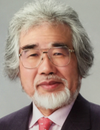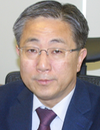Co-Located Conference Agendas3D-Culture & Organoids | Stem Cells in Drug Discovery & Toxicity Screening 2018 |  Other Track Agendas Other Track Agendas3D-Bioprinting "Track B" | Organ-on-a-Chip and Body-on-a-Chip: In Vitro Systems Mimicking In Vivo Functions "Track A" |

Thursday, 4 October 201807:30 | Conference Registration, Materials Pick-Up, Morning Coffee, and Breakfast Pastries | |
Session Title: Conference Opening Plenary Session |
| | |
Plenary Session Chair: Linda Griffith, Ph.D., Professor, Massachusetts Institute of Technology (MIT) |
| | 08:30 |  | Keynote Presentation Microphysiological Models for Metastatic Cancer
Roger Kamm, Cecil and Ida Green Distinguished Professor of Biological and Mechanical Engineering, Massachusetts Institute of Technology (MIT), United States of America
Circulating tumor cells form metastases by reaching a distant microcirculation, undergoing transendothelial migration, entering the remote tissue and proliferating. Microfluidic assays have been developed to visualize and quantify this process within vascular networks that recapitulate aspects of the in vivo microcirculation. Tumor cells, with or without accompanying immune cells, are streamed into a vascular network grown in a 3D matrix, some fraction of which arrest and extravasate into the surrounding matrix. These studies provide detailed information on the ability of different tumor cell types to extravasate, the adhesion molecules they use, and the effects of various other cell types in the intravascular and extravascular spaces. While these models are largely organ-independent, work has also begun to investigate the specificity of certain cancers to metastasize to organs such as the brain. For this purpose, a model of the blood-brain barrier has been produced, characterized in terms of its morphology and vascular permeability, and then used it to explore extravasation and tumor formation with the brain as the target organ.
|
| 09:00 |  | Keynote Presentation Intestine on a Chip for Basic Biology and Patient-Specific Medicine
Nancy Allbritton, Kenan Professor of Chemistry and Biomedical Engineering and Chair of the Joint Department of Biomedical Engineering, University of North Carolina and North Carolina State University, United States of America
Technical advances are making it possible to create tissue
microenvironments on platforms that are compatible with high-content
screening strategies. We have developed microfabricated devices to
enable culture of organized cellular structures which possess much of
the complexity and function of intact intestinal tissue. Stem-cell
culture enables single stem cells or intestinal crypts isolated from
primary small or large intestine from humans or mice to grow and persist
indefinitely as organotypic structures containing all of the expected
lineages of the intestinal epithelium. Our microengineered arrays and
fluidic devices build on this knowledge base to reconstruct
millimeter-scale primary intestinal epithelium that closely mimics the
polarized 3D in vivo microarchitecture of the intestine Chemical
gradients of growth and differentiation factors as well as cytokines are
readily applied across the tissues. These bioanalytical platforms are
envisioned as next generation systems for assay of microbiome-, drug-
and toxin-interactions with the intestinal epithelia. Finally intestinal
biopsy samples can be used to populate the constructs with cells
producing patient-specific tissues for personalized medicine. |
| 09:30 |  | Keynote Presentation Cell Fiber Technology For 3D Tissue-on-a-Chip Application
Shoji Takeuchi, Professor, Center For International Research on Integrative Biomedical Systems (CIBiS), Institute of Industrial Science, The University of Tokyo, Japan
The talk describes a 3D cell culture method using core-shell hydrogel microfibers (cell fibers). The core is filled with cells and ECM proteins, and the shell is composed of calcium alginate. Since the core diameter is about 100 microns, oxygen and nutrients can be diffused into the central area of the 3D tissue; therefore this culture system allows us to culture the tissue for a long period without central necrosis. Using this culture system, fiber-based tissues such as blood vessels, nerves, and muscles can be formed with in the core. Here, I will discuss the application of the cell fiber technology for various tissue-on-a-chip studies including cardiac tissue, neuro-muscular junctions, and vascularized skin etc. |
| 10:00 |  | Keynote Presentation 3D Bioprinting of Soft Tissue: Translation to Clinic
Paul Gatenholm, Professor, Director of 3D Bioprinting Center, Chalmers University of Technology, Sweden; CEO, CELLHEAL AS, Norway, Sweden
3D Bioprinting has a potential to revolutionize regenerative medicine due to unique ability to place multiple cell types in predetermined position and build bottom up the microenvironment to control cellular fate processes. Adult stem cells can be harvested in operating room and combined with biopolymeric hydrogels and 3D bioprinted into desire shape. We have focused our research onto translation of 3D bioprinting technology to clinic. Together with plastic surgeons we are studying preclinical transplantation of 3D bioprinted constructs with stem cells isolated from patient in operating room. The goal is to promote wound healing and repair soft tissue. Translation includes regulatory approved cell isolation protocols and use of regulatory compliant bioinks. We have invented cell-instructive bioinks to be able to control cellular fate processes and to grow vascularized tissue which is of great interest for bringing 3D Bioprinting technology to clinic and space applications. |
| 10:30 | Coffee Break and Networking in the Exhibit Hall | 11:00 |  | Keynote Presentation Industrial Adoption of Integrated Multi-Organ-Chip Solutions
Reyk Horland, CEO, TissUse GmbH, Germany
Microphysiological systems have proven to be a powerful tool for
recreating human tissue- and organ-like functions at research level.
This provides the basis for the establishment of qualified preclinical
assays with improved predictive power. Industrial adoption of
microphysiological systems and respective assays is progressing slowly
due to their complexity. In the first part of the presentation examples
of industrial transfer of single-organ chip and two-organ chip solutions
are highlighted. The underlying universal microfluidic Multi-Organ-Chip
(MOC) platform of a size of a microscopic slide integrating an on-chip
micro-pump and capable to interconnect different organ equivalents will
be presented. The second part of the presentation focusses on the
challenges to translate a MOC-based combination of four human organ
equivalents into a commercially useful tool for ADME profiling and
toxicity testing of drug candidates. This four-organ tissue chip
combines intestine, liver and kidney equivalents for adsorption,
metabolism and excretion respectively. Furthermore, it provides an
additional tissue culture compartment for a fourth organ equivalent,
e.g. skin or neuronal tissue for extended toxicity testing. Issues to
ensure long-term performance and industrial acceptance of such complex
microphysiological systems, such as design criteria, tissue supply and
on chip tissue homeostasis will be discussed. |
| 11:30 |  | Keynote Presentation Human Pluripotent Stem Cell-derived Cardiomyocytes/Neurons on 3D Micro-Tissue Devices for Matured and Functional Cell Products in Drug Discovery and Screening
Norio Nakatsuji, Chief Advisor, Stem Cell & Device Laboratory, Inc. (SCAD); Professor Emeritus, Kyoto University, Japan
Human pluripotent stem (PS) cells, including ES and iPS cells, are
promising sources of various model cells for drug discovery and
toxicology screening. However, there are important (but still
unsatisfactory) needs of more matured and functional cells with reliable
and low-cost production from human iPS or ES cells. We developed a
method of robust and low-cost cytokine-free differentiation of
cardiomyocytes from human ES/iPS cells by combination of small chemical
compounds. We also developed low-cost and labor-saving methods for
construction of 3D multi-cellular devices with aligned nanofibers for
more matured and functional cell device products. Our human iPSC-derived
cardiomyocytes or neurons seeded on nanofiber scaffolds form 3D
multi-layered structures (Micro-Tissues), which show matured and stable
cell/tissue functions. Our Micro-Tissue devices are easy to handle and
useful for drug screening and toxicology assays. |
| 12:00 |  | Keynote Presentation Multi-MPS Interactions for Chronic Inflammatory Disease: A Scaling Challenge
Linda Griffith, Professor, Massachusetts Institute of Technology (MIT), United States of America
The pioneering work of Shuler and colleagues over 20 year ago demonstrated the potential for using interconnected MPS for pharmacology and toxicology applications by showing metabolic conversion of a compound in one MPS and downstream effects on a second MPS. As the role of immunological contributions to drug safety have become more appreciated, the need for more complex immunologically-competent MPS has grown. This has driven development of more complex MPS that are also potentially valuable for modeling inflammatory diseases. This talk will address technical challenges in modeling complex diseases with “organs on chips” approaches include the need for relatively large tissue masses and organ-organ cross talk to capture systemic effects, as well as new ways of thinking about scaling to capture multiple different functionalities from drug clearance to cytokine signaling crosstalk. An example of how gut-liver interactions can be parsed at these levels will be featured, along with new approaches for culturing complex 3D tissues with synthetic extracellular matrix and higher-order multi-organ interactions involving immunology. |
| 12:30 | Networking Lunch in the Exhibit Hall -- Meet the Exhibitors and View Posters | 12:45 | Luncheon Presentation: 3D Stereolitography Bioprinting of Cell-Laden Hydrogel Microarrays and LEGO-like Modular Bioceramics for Tissue Engineering
Luiz Bertassoni, Associate Professor, Biomaterials and Biomechanics, School of Dentistry, Cancer Early Detection Advanced Research, Knight Cancer Institute, Oregon Health & Sciences University, United States of America
Fabrication of three-dimensional tissues with controlled microarchitectures has been shown to enhance tissue functionality. 3D printing can be used to precisely position cells and cell-laden materials to generate controlled tissue architectures. Therefore, it represents an exciting alternative for organ fabrication. Our group has been interested in developing innovative printing-based technologies to improve our ability to regenerate tissues with improved function, as well as to engineer hydrogel based microfluidic devices. In this seminar, we will present SLA/DLP-based 3D printing methods to fabricate high-throughput screening platforms to probe mechanotransduction and geometry-controlled mechanisms of stem cell differentiation. Further, we will discuss recent methods our lab has developed to engineer hard tissues using stereolitography printing of high-density bioceramics that can be stacked with multiple 3D geometries and improved regenerative capacity. | |
Session Title: Emerging Themes and Trends in 3D-Bioprinting in the Life Sciences |
| | 14:30 |  | Keynote Presentation 3D Cell Printing Technology with Tissue-Specific Bioink
Dong-Woo Cho, Professor, Pohang University of Science and Technology (POSTECH), Korea South
3D cell printing systems developed in our lab are introduced along with the high performance tissue specific bioinks also developed in our lab. They are applied to construct several different kinds of organ chips as well as in-vitro models/orgnoids. In-vitro models for cardiac muscle, skeletal muscle, skin, and chips recapitulating airway, GBM, liver, etc are included. |
| 15:00 | Developing Bioink Formulations that Promote Multicellular Tumor Organoid Growth
Joseph Kinsella, Assistant Professor of Bioengineering, McGill University, Canada
The cellular, biochemical, and biophysical heterogeneity of native tissue microenvironments are not recapitulated by growing immortalized cell lines using conventional 2D cell culture. These challenges can be overcome using bioprinting techniques to build heterogeneous 3D tissue models whereby, different types of cells are embedded. Alginate and gelatin are two of the most common biomaterials employed in bioprinting due to their biocompatibility, biomimicry, and mechanical properties. By combining the two polymers we demonstrate a bioprintable composite hydrogel with likenesses to the microscopic architecture of native tissue stroma. The printability of the composite hydrogels are evaluated mechanically to acquire the optimal extrusion bioprinting timescale post-gelation. Breast cancer cells and fibroblasts embedded into the hydrogels can be printed to form a 3D model mimicking the in vivo tumor microenvironment. The bioprinted heterogeneous model achieves high viability for long-duration cell culture (>30 days) and promotes the self-assembly of the breast cancer cells into multicellular tumor spheroids (MCTSs). We observed migration of the cancer associated fibroblast cells (CAFs) with the MCTSs in this model. Using bioprinted cell culture platforms as co-culture systems we are able to develop a unique tool to study the dependence of tumorigenesis on the stroma composition. The materials developed are a continuous effort towards a physiologically relevant “universal” bioink that can be tuned to have specific initial mechanical and biochemical properties for different tissue architectures. | 15:30 | Afternoon Coffee Break and Networking in the Exhibit Hall | 16:00 |  | Keynote Presentation Novel Materials and Strategies For Extrusion Bioprinting
Michael Gelinsky, Professor and Head, Center for Translational Bone, Joint and Soft Tissue Research, Faculty of Medicine, Technische Universität Dresden, Germany
Three dimensional bioprinting is a fast developing field of research. Beside other technologies, extrusion printing (direct printing/3D plotting) is one of the most common techniques for bioprinting. It is based on the controlled deposition of cells, suspended in hydrogels of suitable viscosity. The combination of hydrogel and cells is called bioink. Extrusion bioprinting therefore directly leads to tissue-like constructs, consisting of cells and an extracellular matrix-like structure which might be advantageous especially for musculoskeletal tissues. The lecture will describe some recent developments in the field of novel bioinks, co-printing of bioinks and self-setting mineral bone cements as well as a nanoparticle-based sensor system which allows local on-line analysis of oxygen concentration in 3D bioprinted constructs. |
| 16:30 | Putting 3D Biofabrication to the Use of Tissue Model Fabrication
Y. Shrike Zhang, Associate Bioengineer, Division of Engineering in Medicine, Harvard-MIT Division of Health Sciences and Technology, United States of America
The talk will discuss our recent efforts on developing a series of bioprinting strategies including sacrificial bioprinting, microfluidic bioprinting, and multi-material bioprinting, along with various cytocompatible bioink formulations, for the fabrication of biomimetic 3D tissue models. These platform technologies, when combined with bioreactors and bioanalysis, will likely provide new opportunities in constructing functional organoids with a potential of achieving precision therapy by overcoming certain limitations associated with conventional models based on planar cell cultures and animals. | 17:00 |  Inkjet fluid Characterization and Deposition Using the Samba Cartridge with the Dimatix Materials Printer Inkjet fluid Characterization and Deposition Using the Samba Cartridge with the Dimatix Materials Printer
Robert Ramirez, Chief Scientist, FUJIFILM Dimatix
The FUJIFILM Dimatix Materials Printer (DMP) is a versatile benchtop materials deposition system designed for micro-precision jetting of a variety of functional fluids including aqueous-based, solvent-based and UV-curable fluids. Since its introduction 13 years ago, the DMP is the premiere turnkey system in expediting rapid prototyping of products from the proper fluid, e.g. 3D printed materials, flexible electronic circuits, RFID antennas, and DNA arrays, while also facilitating the development and testing of manufacturing processes. The cartridge that the DMP currently employs is useful for characterizing jetting behaviors of fluids, and can be helpful in screening fluid formulations that cannot be reliably jetted using industrial printheads. Presented herein is our new cartridge product for use in the DMP, the Samba cartridge. This latest cartridge is the exact Si-MEMS jet design found in our most advanced printhead available today, the Samba G3L printhead. As with the industrial Samba printhead, the Samba cartridge has a 2.4 pL drop volume. However, instead of 2048 nozzles, it has the same 16-jet configuration as the original DMP cartridges and can be used directly with the current DMP software and printer features. Designed for high-resolution, non-contact jetting of functional fluids in a broad range of applications, the DMP Samba cartridge allows fluid and waveform development for product prototyping directly using the same jet design as the Samba G3L printhead.
| 17:30 |  3D Bioprinting of Human Hepatic Tissue Models 3D Bioprinting of Human Hepatic Tissue Models
Hector Martínez, Chief Technology Officer, CELLINK
In this study, we evaluate the bioprintability of human liver ECM under
physiological conditions to assess the in vitro biocompatibility with
human hepatic cells and to model liver fibrosis in vitro. Human hepatic
cell lines (HepG2 and LX2) were gently mixed with HEP X™ bioink using a
CELLMIXER® directly into a cartridge before bioprinting. Tissue printing
was performed in a BIO X 3D printer under physiological conditions.
Bioprinted tissues were maintained in 3D culture up to 14 days and
exposed to TGFß1 for 6 days in order to promote an in vitro fibrogenic
process. The resultant bioprinted liver tissue was analysed by viability
assay, histology and gene and protein expression. The combination of
human liver ECM bioink with liver cell types resulted in an increased
cell viability and proliferation compared to control bioink.
Pro-fibrogenic genes and proteins including aSMA (p<0.001) and
pro-COL1 (p<0.001) were up-regulated in the LX2-laden constructs
after 6 days of TGFß1 exposure. HepG2-laden constructs showed
spontaneous formation of spheroids after 14 days in culture with
up-regulation of albumin gene expression and protein secretion after 14
days compared to 7 days (p<0.001). This is the first report
describing the bioprinting of human hepatic tissue using human liver ECM
as bioink. This is a key advance in the development of cell-instructive
bioinks for the study of liver disease and for the development of 3D
hepatic tissue for transplantation.
| 18:00 |  The Key Applications of 3D Bioprinting The Key Applications of 3D Bioprinting
Taciana Pereira, Director of Bioengineering, Allevi, Inc.
Biology exists in 3D, but it is most often studied in oversimplified 2D experiments. Extrusion bioprinting offers a series of standardized, automated, and high-throughput methods that allow for the creation of relevant 3D models within tissue engineering and pharmacology. This presentation will review the key bioprinting methods that are empowering researchers around the world.
| 18:30 | Networking Reception in the Exhibit Hall with Beer and Wine. Meet the Exhibitors and Network with Your Colleagues | 19:30 | Close of Day 1 of the Conference. |
Friday, 5 October 201808:00 | Morning Coffee and Breakfast Pastries in the Exhibit Hall | |
Session Title: Applications of 3D-Bioprinting in Life Science Research and Medicine |
| | 09:00 | Image-Guided, Laser-Based Fabrication of Hydrogel-Embedded Microfluidic Networks
John Hundley Slater, Associate Professor of Biomedical Engineering, University of Delaware, United States of America
We demonstrate fabrication of three-dimensional, biomimetic microfluidic networks embedded in hydrogels by combining laser-induced hydrogel degradation with image-guided laser control. Generation of simple arteriole-like networks, high-density, microvascular networks that recapitulate the architecture of in vivo vasculature, and multiple independent networks that fill the same hydrogel volume but never connect is demonstrated. Recapitulating in vivo-like fluid flow and transport using biomimetic microfluidic networks may prove advantageous in fabricating advanced in vitro tissue models. | 09:30 |  | Keynote Presentation Continuous Projection 3D Bioprinting For Functional Scaffolds and Tissue Models
Shaochen Chen, Professor and Chair, NanoEngineering Department, University of California-San Diego, United States of America
In this talk, I will present our laboratory’s recent research efforts in rapid continuous projection 3D bioprinting to create 3D scaffolds using a variety of biomaterials. These 3D biomaterials are functionalized with precise control of micro-architecture, mechanical (e.g. stiffness and Poisson’s ratio), chemical, and biological properties. Design, fabrication, and experimental results will be discussed. Such functional biomaterials allow us to investigate cell-microenvironment interactions at nano- and micro-scales in response to integrated physical and chemical stimuli. From these fundamental studies we can create both in vitro and in vivo microphysiological systems such as a human liver tissue for tissue regeneration, disease modeling, and drug discovery. |
| 10:00 |  Digital Biomanufacturing Tools Support Creating 3D Tissue-Like Structures Digital Biomanufacturing Tools Support Creating 3D Tissue-Like Structures
William G Whitford, Life Science Strategic Solutions Leader, DPS Group
Digital biomanufacturing refers to such concepts as increased monitoring, control algorithms, machine-learning and process modeling to a new level of process understanding, prediction and control in biotechnology. The IIoT, Big Data and Cloud technologies insure that (historical and real-time) data being collected can be employed productively in richer data management, analysis and model generation. Digital biomanufacturing will assist in the modeling and imaging required to recapitulate the (often personalized) complex and heterogeneous architecture of functional tissues and organs. It will also provide the required coordination and dynamic control of consequent complex tomographic information and models, multimode 3D printing and biofabrication processes, as well as such ancillary procedures as the environmental control of bioinks and nascent constructs. New and even commercially available approaches exist for the processing eg, medical imaging and the results of previous run records. They can generate printing formulas, recipes and fabrication scenarios considering matrix polymerization and integrity constraints. Monitoring and control goals include the printing environment, cell viability and adhesion and matrix assessment. These newer and more powerful algorithms support multi-material and multi-mode bioprinting and can consider the effects of intra-construct gradients and distinctions. Finally, they will assure compliance and reporting to, internal QC, QA and Regulatory.
| 10:30 | Coffee Break and Networking in the Exhibit Hall |
|


 Add to Calendar ▼2018-10-04 00:00:002018-10-05 00:00:00Europe/London3D-Bioprinting "Track B"SELECTBIOenquiries@selectbiosciences.com
Add to Calendar ▼2018-10-04 00:00:002018-10-05 00:00:00Europe/London3D-Bioprinting "Track B"SELECTBIOenquiries@selectbiosciences.com